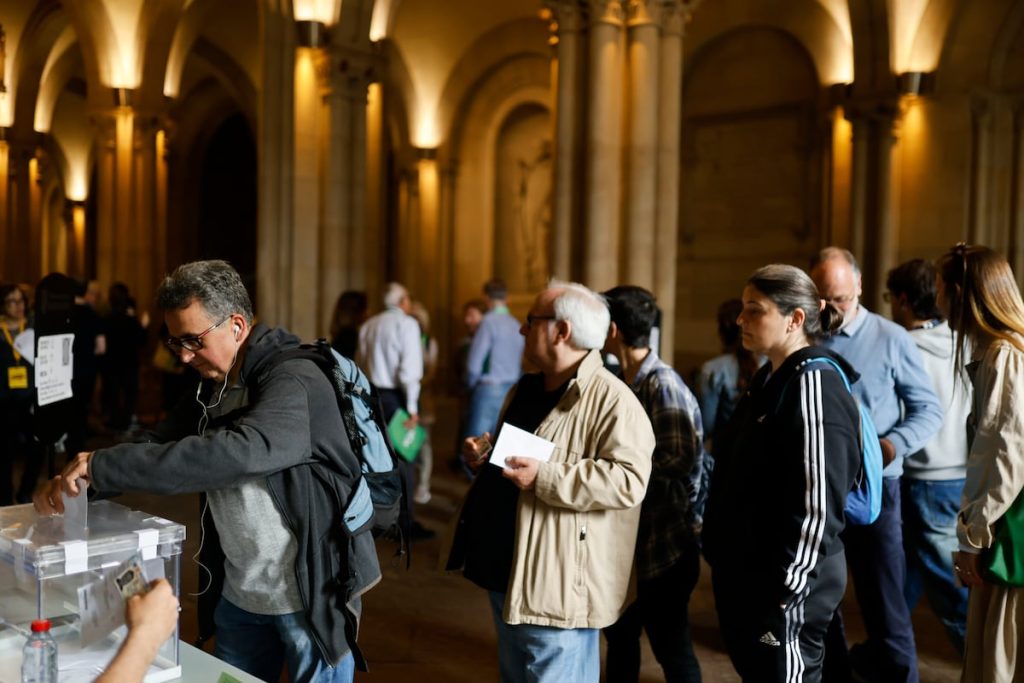This Sunday, Catalonia is electing the 135 deputies of its 14th Parliament since the restoration of democracy. As of 6:00 p.m., the voter turnout stands at 45.79%, six points lower than the average for all elections held since 1995, which is 52.9%. The highest turnout at this time was in 2017 with 68.26%, while the lowest was in 2006 with 45.3%. In the last regional elections in 2021, marked by the pandemic, the turnout at 6:00 p.m. was 45.61%, very close to the numbers on this Sunday at the same time. By province, voter turnout as of this Sunday is 46.21% in Barcelona, 45.83% in Girona, 43.34% in Lleida, and 44.06% in Tarragona.
The first participation rate recorded by 1:00 p.m. was 26.91%, slightly lower than the average of 27.63% for all elections since 1995. The spokesperson for the Catalan government, Patrícia Plaja, mentioned that these are the “first elections where real-time data can be followed” thanks to over 4,000 government representatives inputting information into the system. There have been no incidents reported during the elections, according to Plaja. The voter turnout is almost identical to that of 2021, which had one of the lowest turnouts due to the pandemic. Typically, more Catalans vote in general elections compared to regional elections, but regional elections tend to attract more voters on average than municipal and European elections.
In terms of voter turnout by province, Girona has the highest average at 65.7% since the first elections in 1980, followed by Lleida at 63.6% and Barcelona at 62.2%. Tarragona has the lowest turnout at 61.7%. These rankings were consistent with the 2021 regional elections. All polling stations opened at 8:00 a.m. and voters have until 8:00 p.m. to cast their ballots. A total of 5,754,840 people, including 294,508 residents abroad, are eligible to vote in these elections. Of those residing in Catalonia, 243,003 will be voting in regional elections for the first time, with 61,341 of them being first-time voters who turned 18 since the 2021 elections.
The final voter turnout, excluding non-resident votes, was 53.53%, the lowest in history and ten points below the average in 2021. However, including the non-resident votes, the turnout was 51.29%. The highest turnout for Catalan elections was in 2017 with 81.79%, which dropped to 79.09% after including non-resident votes. This year, there was an increase in postal voting compared to previous years. A total of 106,031 people requested postal votes, with 97,452 being accepted, a 36.6% increase compared to the 2017 elections.
A total of 18 political parties are participating in these elections, with 12 of them fielding candidates in all four constituencies: Barcelona, Tarragona, Girona, and Lleida. Barcelona has the largest number of voters with 4,278,966 (5.3% residing abroad), followed by Tarragona (603,684 voters), Girona (553,337), and Lleida (318,853). The country with the most Catalan voters eligible to vote is France (40,000), followed by Argentina (29,000), the UK (23,000), the US (22,000), and Germany (22,000). This marks the first regional election since the abolition of the requirement for overseas residents to request the right to vote, which was eliminated in September 2022.















